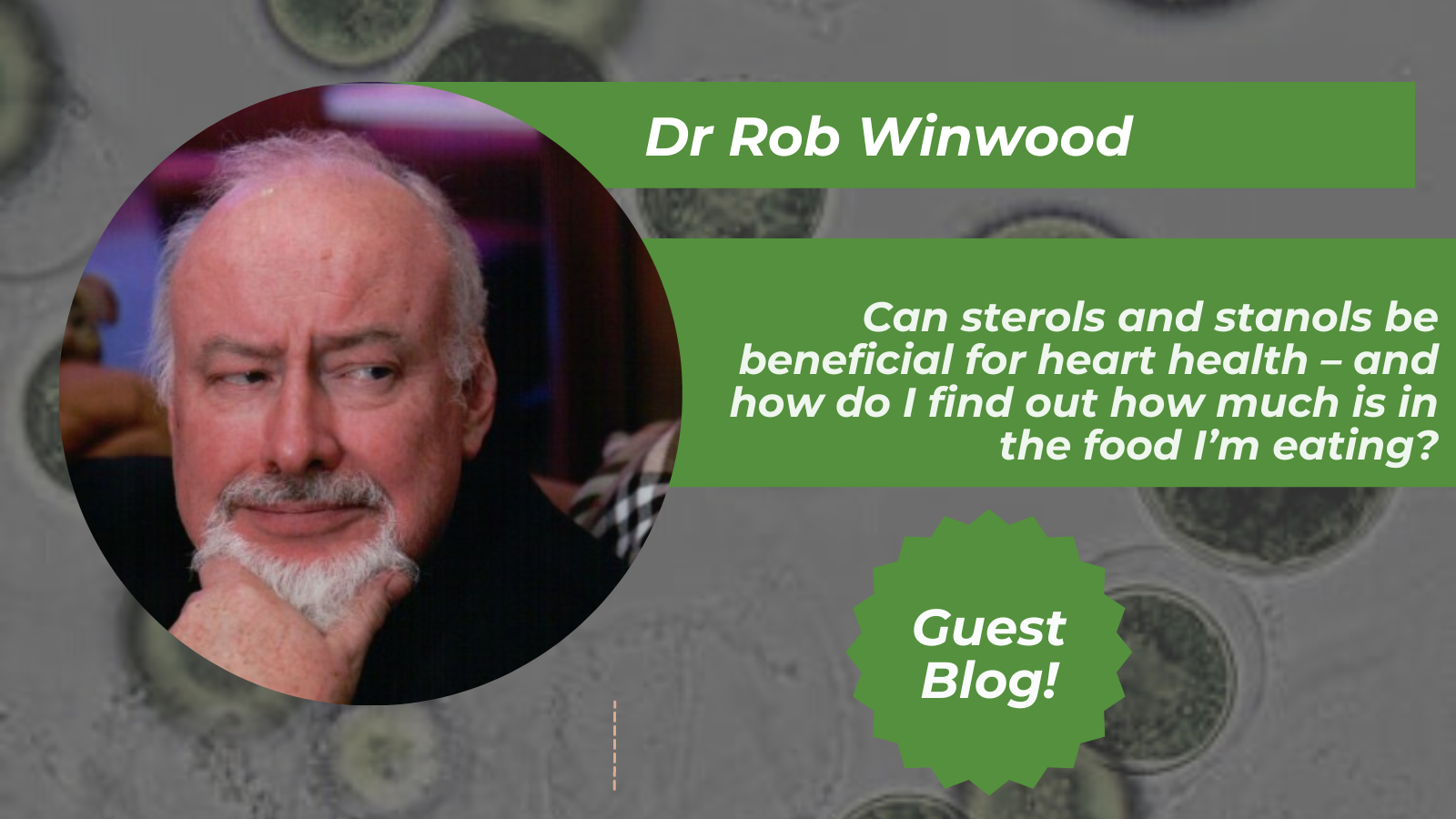Rob Winwood: Can sterols and stanols be beneficial for heart health – and how do I find out how much is in the food I’m eating?

Can sterols and stanols be beneficial for heart health – and how do I find out how much is in the food I’m eating?
Plant sterols and stanols are a group of natural phytonutrients which have a structural similarity to cholesterol. They are able to lower blood cholesterol levels, and thus can be beneficial to cardiovascular health. It was originally believed that their mode of action was by preventing the absorption of cholesterol from the gut, but more recent research suggests it is more complicated than that, and multi factorial in nature!
Perhaps curiously, meta-analyses of randomised controlled trials using interventions of sterols and stanols have not demonstrated a significant reduction in heart attacks or strokes (Ras, 2014). This may be because blood cholesterol reduction is only beneficial to certain categories of the population. However, it is likely to be effective in individuals who have an Inherited tendency towards high cholesterol (familial hypercholesterolemia) or who already have high blood cholesterol levels and are being with treated with statins and on a low cholesterol diet (Gylling, 2014). A Meta-analysis has reported that a daily intake of 2.5 g plant sterols/stanols reduced serum LDL-C concentrations up to 10% (De Smet, 2012).
At first, it was thought that plant sterols/stanols competed with intestinal cholesterol for incorporation into mixed micelles and chylomicrons. Then it was thought sterol transporters localised in the membranes of enterocytes had a role. Of course, both these processes ultimately lowered intestinal cholesterol absorption. More recent studies have described the existence of a pathway activated by plant sterols/stanols of direct secretion of cholesterol from the bloodstream into the intestinal lumen. This would explain the reduced fecal neutral sterol content and thus could explain their cholesterol-lowering activity (De Smet 2012).
Sterols, and to a lesser extent stanols, are naturally present in most people’s diets. Those who have been advised by their medical practitioner to increase their intake can do so by consuming them in the form of supplements or fortified foods. Importantly, sterols and stanols will only be absorbed in the gut when present in a fatty matrix. Esterification of the plant sterols and stanols with long chain fatty acids increases their lipid solubility and facilitates their incorporation into fortified foods (BMJ, 2000).
In 2012, an EFSA scientific opinion stated that a daily intake of 3 g plant sterols and stanol esters in suitable fatty matrices lowered LDL-cholesterol by 11.3 %, and that the minimum duration required to achieve the maximum effect of plant sterols and stanols on LDL-cholesterol lowering is two to three weeks. The approved EFSA approved fatty matrices for this purpose are yellow fat spreads, dairy products (including yoghurt), mayonnaise and salad dressings.
A healthy diet typically contains around 200-400mg of sterols and stanols a day, obtained mainly from vegetable oils and seeds. The most abundant are sitosterol and campesterol, which contribute 60% and 20%, respectively, of plant sterol intake (Gylling, 2014). However, intake from the diet is too low to bring about a significant cholesterol-lowering effect on its own but will make a contribution. Hence it is important to measure the sterol/stanol levels not only in fortified foods and supplements, but also in likely sources in the diet.
The quantitative analysis of phytosterols and stanols usually used GC-MS and require elaborate sample preparation including chemical derivatisation. HPLC with absorbance detection can also be used but do not provide information regarding the identity of the sterol or stanol. (Mo et al, 2013). However, a quantitative method avoiding derivatisation, based on LC-tandem mass spectrometry (LC-MS-MS) developed and validated for the measurement of six abundant dietary phytosterols in edible oils (brassicasterol, campesterol, cycloartenol, β-sitosterol, stigmasterol, and lupeol) (Mo, 2013).
If you want to know the identity and/or levels of sterols and stanols in your sample, Mylnefield Lipid Analysis can help you!
References:
BMJ. 2000; 320(7238): 861–864
De Smet E et al., 2012, Mol Nutr Food Res;56(7):1058-72.
EFSA NDA Panel, 2012, EFSA Journal 2012:10(5):2693.
Gylling H, 2014, Atherosclerosis, 232( 2): 346-360.
Mo S. et al., Lipids. 2013 Sep; 48(9): 949–956.
Ras RT et al 2014, Br J Nutr. ; 112(2): 214–219.
